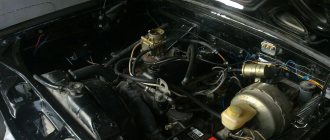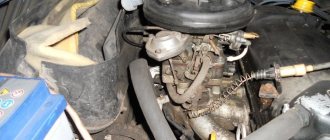One way to assess the proper functioning of the power plant is to check the condition of the spark plugs. Any disruption of the processes taking place in the cylinders will immediately leave marks on these elements. In most cases, spark plugs provide insight into the operation of the ignition and power systems. But there are also symptoms indicating problems with other components of the power plant.
One such sign is the detection of oil traces on the spark plugs. Lubricant on the spark plugs can appear due to a number of specific malfunctions. Some of them do not pose any particular danger to the engine, but others are a signal of serious problems that can lead to expensive repairs.
Causes of oil on spark plugs
If the candles are covered with oil, then first of all it is necessary to determine exactly which part has the most of it. Many car owners are faced with a situation where only the threads and body are coated with lubricant, while the electrodes are dry and have a normal color (light brown). But it also happens that the entire base ends up in oil.
At the same time, in addition to traces of lubricant on the spark plugs, a malfunction with the engine manifests itself in other ways - deterioration in dynamics, increased exhaust smoke, oil burns. In order for it not to be the cause, it must be eliminated.
Most often, the appearance of grease marks occurs due to wear and damage:
- Valve guides.
- Oil seals.
- Valves.
- Cylinder head gaskets (cylinder head).
- CPG elements (cylinder-piston group).
Traces of lubricant on the body and threads are mentioned for good reason, since oil can get onto the spark plug not only from the cylinder, but also due to external leaks. So, on some cars, a loose fit of the cylinder head cover gasket is considered a “disease”. As a result, candles seep through leaks and get into the wells. Thus, oil accumulates in the wells of the spark plugs and when unscrewing the spark plugs, both the body and the threads are simply smeared in the accumulated lubricant. The problem is “treated” by replacing the gasket and coating it with sealant.
avtoexperts.ru
A fairly common phenomenon is the appearance of oil on the spark plugs, which negatively affects the operation of the engine, ranging from unstable starting to decreased dynamics, increased fuel consumption and a general decrease in the power of the power plant.
In addition, the waste of motor oil, which, as is known, is more expensive than gasoline and significantly hits the pockets of car enthusiasts, can increase quite significantly, plus the constant “triplication” of the engine and unstable idling cannot but stress the owner.
What are the reasons for the appearance of oil on candles? In this article, we will analyze the main ways oil gets into the engine combustion chamber and, as a result, onto the spark plugs.
Consequences of a malfunction
If you ignore the problem of lubricant getting into the cylinders, which is indicated by traces of oil on the spark plug, the consequences will be very serious. The lubricant is not able to completely burn out in the cylinders, moreover, the part of it that does burn out becomes the cause of a large amount of soot.
This carbon deposits on the internal surfaces of the cylinder, which affects the processes taking place inside it, and also leads to the occurrence of rings. Because of this, the amount of oil entering the combustion chamber increases sharply. As a result, the engine power drops significantly, and it begins to intensively consume lubricant and fuel. Restoring the engine after this is quite difficult and financially expensive, since a major overhaul is required.
Why does engine oil get into the combustion chamber?
So, the driver may find that the spark plugs are in oil, the engine emits bluish smoke, increased oil consumption, and the power unit starts up less well, may stall, engine power is somewhat lost, etc.
It is not surprising that lubrication in the combustion chamber negatively affects the operation of the internal combustion engine. Otherwise, engine oil burnout (the lubricating fluid in the engine cylinder burns at the moment when the fuel-air mixture is burned in the cylinder) not only requires constant monitoring of the level and topping up of lubricating fluid, but also gradually disables the engine.
It is quite obvious that this problem needs to be solved as quickly as possible in order to avoid more serious consequences. Now let's look at why oil gets into the combustion chamber.
First of all, a sure sign of such a problem is the presence of oil on the spark plugs. To put it simply, in the case when the electrodes are in lubricant, this indicates that oiling of the spark plugs directly indicates excessive penetration of the lubricant into the engine cylinder.
As for the reasons, experts highlight the following in the list of main ones:
- there are problems with the valve guides or valve seals;
- the valves themselves are faulty;
- piston rings are stuck or worn;
- the engine has been overfilled with engine oil;
- there are problems with the ventilation of the boat;
Next, we will consider these faults in order. Typically, wear on the inner surface of valve guides results in severe play between the valve stem and the valve guide. As a result, oil from the cylinder head enters the combustion chamber and oils the spark plugs.
A less common problem area is the valve guide, which comes out of the cylinder head body. Typically, this situation arises if the guides have already been changed previously, but the standard ones were not repair enlarged ones, but standard ones.
What can be done
If the spark plugs are filled with oil, then identifying the cause is not so difficult, but eliminating it can be a troublesome task.
If we talk about the case of a leaking valve cover gasket described above, then everything is very simple - oil is noticed in the spark plug wells - the sealing element requires replacement.
It’s worse if grease is found on the bottom of the spark plug (and it can be on one, several or all spark plugs).
A compression test will partially help here. If the rings are stuck or the valves do not fit tightly, it will certainly decrease. If there are traces of lubricant on the spark plugs, but the compression is fine or even increased (which happens due to the oil present in the combustion chamber, which acts as a seal in the existing gaps), you will have to disassemble the cylinder head to assess the condition of the oil seals and valve guides. In general, it is the last two elements that are the most common reasons for lubricant getting into the cylinders, including spark plugs.
Do not forget that the engine itself has a certain resource. If it is noticed that all the spark plugs are in oil, and the compression has dropped significantly below normal, it may be worth considering a major overhaul, since the degree of engine wear has reached critical levels.
Tired engine
Let's be honest - how often do we remove spark plugs to check their condition? It’s unlikely that many people do this every oil change. Even the owners of the domestic automobile industry, where it takes a maximum of 10 minutes to unscrew the spark plugs, look at them and screw them back in, and even then they do this very rarely.
As a rule, we unscrew the spark plugs only when there are some problems with the engine, and only then from the spark plugs we determine the complexity of the upcoming repair. And, seeing that there is oil on the spark plugs, you should make a difficult conclusion for yourself - the engine is pretty tired.
Other deposits and deposits
White plaque is not the only possible deviation from the normal state of the electrodes. To correctly assess risks, you need to know the meanings of other shades of deposits.
Black
The following problems can cause the appearance of black soot:
- Over-enriched mixture, fuel sensor problems (dry residue remains on the electrode).
- Unsuitable “cold” candles.
- Air filter clogged.
- Oil combustion (shiny, sooty electrode and thread).
- Loose nozzle fit or broken check valve.
With late ignition and a small advance angle, the spark plugs turn black even with the correct choice of heat rating and gasoline.
Red and brown
Scarlet, brown and red soot is a consequence of the use of low-quality fuel with ferrocene, manganese or lead additives. A thick red layer can make it difficult for a spark to pass through and disrupt the operation of the engine, so when it appears, it is recommended to change the brand of oil or gas station.
Zolny
Ash soot can be both light and dark. When it appears, increased oil consumption, decreased power, and darkening of the exhaust gases are observed.
The cause of the problem is worn or stuck piston rings.
Erosion
If the spark plug is defective, early ignition, or prolonged operation on low-octane or low-quality fuel, erosion (destruction) of the central electrode may occur. At the same time, the power of the internal combustion engine decreases, and when driving, jerking, instability at idle and “triple” are observed. The part requires immediate replacement.
Gasoline on spark plugs
Filling of spark plugs occurs when there is a malfunction of the fuel system, injector or carburetor, less often when starting in cold weather. To solve the problem, you need a complete diagnosis of the car and repair of damaged parts of the internal combustion engine.
Oil and fuel deposits
A shiny yellow or dark coating indicates grease penetration and wear of the valve seals. A characteristic accompanying symptom is blue smoke and high engine oil consumption.
Fuel carbon deposits occur when valves become depressurized or the piston system wears out. At the same time, against the backdrop of a drop in power and unstable operation of the internal combustion engine, gasoline consumption increases.
In more rare cases, a green coating is observed on the electrodes. Its cause may be the presence of additives in gasoline or the ingress of antifreeze into the combustion chamber.
Valve seal suitability test
It is advisable to carry out such diagnostics together:
- For this test, you need to start the car engine, warm it up to operating temperature and let it idle for 4-5 minutes.
- Then ask your partner to use the gas pedal to increase the engine speed to 3000-4000 per minute.
- At this time, you need to watch the exhaust.
- If immediately after pressing the accelerator pedal thick bluish smoke comes out of the chimney and then disappears, this indicates problems with the valve seals.
- This is also evidenced by an oily coating on the tip of the pipe.
- If there are no malfunctions in the power unit, even with a sharp change in speed, smoke will not appear from the exhaust pipe.
Useful tips
As you can see, replacing the sealant under the valve cover is not a complicated procedure. The main requirements include thorough cleaning of the old layer and proper application of fresh sealant to the surface.
The applied layer must be even and no interruption is allowed. It should also be noted that the sealing compound must also be used to treat the joints between the connections of the spark plug wells, having previously removed the old sealant from there.
Let us add that these areas, as a rule, are generously covered with a sealing compound, which will require some effort to fully clean such surfaces. To process the connections of the spark plug wells, a special red sealant is used, which can be purchased at car dealerships.
If only one engine needs to be repaired, then it will be enough to purchase a small tube of heat-resistant sealant. You can also read about selecting the best sealant for the engine in our separate article.
It should be noted that the use of sealant if the valve cover on a particular internal combustion engine is installed through a rubber gasket is undesirable. In this case, it is necessary to purchase a new high-quality gasket, after which the mating surfaces are checked. Next, the new valve cover gasket is installed in place, after which the valve cover is tightened, taking into account the order and torque of the fasteners.











